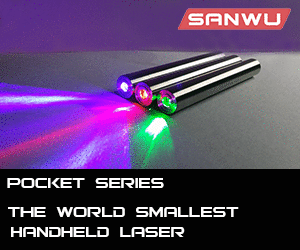I imagine sweat-soldering it like copper pipe would work, prior to installing the diode.
According to
this link the thermal conducivity of 60/40 solder alloy is 49.8 W/m*K. So, about 50 W/m*K. This is what I would use since I have a lot of it on hand. Wikipedia gives similar values for SnPb 63/37 and ~60 W/m*K for various lead-free solders. Link is
here. All of these values are much lower than copper, aluminum, and even brass.
This page gives the conductivity of SnAg 96.5/3.5 as 78 W/m*K. It is one of the lower-melting ones, also.
However the Wikipedia list also gives the conductivity of silver-based thermal grease. If solder alloy is bad, then I don't know what to call thermal grease. Based on that list, the conductivity of grease is less than 1.0 W/m*K, making the solder's conductivity ~50 to ~60 times that of thermal grease. But then, soldering a module into a heatsink is an involved task, even more so if the intent is to retrofit an already-built laser.
Grease, OTOH, is easy to use and replace as needed, but far as I can tell that's the only thing it has going for it. That, and you can't very well sweat-solder a heatsink to your overclocked i7 unless you want burnt silicon for dinner. I wouldn't expect laser modules or their heatsinks to have that problem, as long as there's no diode installed in it.
It seems to me that as long as the soldering job is good and there are few/no air voids in the joint, solder would be vastly superior to grease, at least where raw numbers are considered. It looks good on paper. But then, maybe the process of soldering could deform the heatsink so that it (or the diode) no longer fits, or maybe cause some sort of oxide buildup that impedes heat transfer. Maybe the flux would cause some kind of problem.
In any case I wouldn't want to do it with a diode already installed, since you'd have to heat the heatsink and module to hundreds of degrees, at least 300°C and maybe more, to ensure that the solder flows well enough to thoroughly saturate the joint and eliminate all air voids. You'd probably want to polish away any oxide that forms on the heatsink's surface as well. At that point it might be easier (although probably more expensive) to have a member craft a one-piece heatsink if heat transfer is that big a deal.
I would think the best way would be a copper AixiZ module and a copper heatsink, using solder designed for plumbing or HVAC sweat soldering. The only thing I've heard about soldering to aluminum is that it requires special solder and flux, and is generally a PITA.
Interesting idea all around though, might be worth it if you're building something with that 3.5W 445 or similar high-power diode. But then again, if you can afford that, you can probably afford a custom heatsink too. Oh well, just my thoughts on it based on the numbers I looked up.





